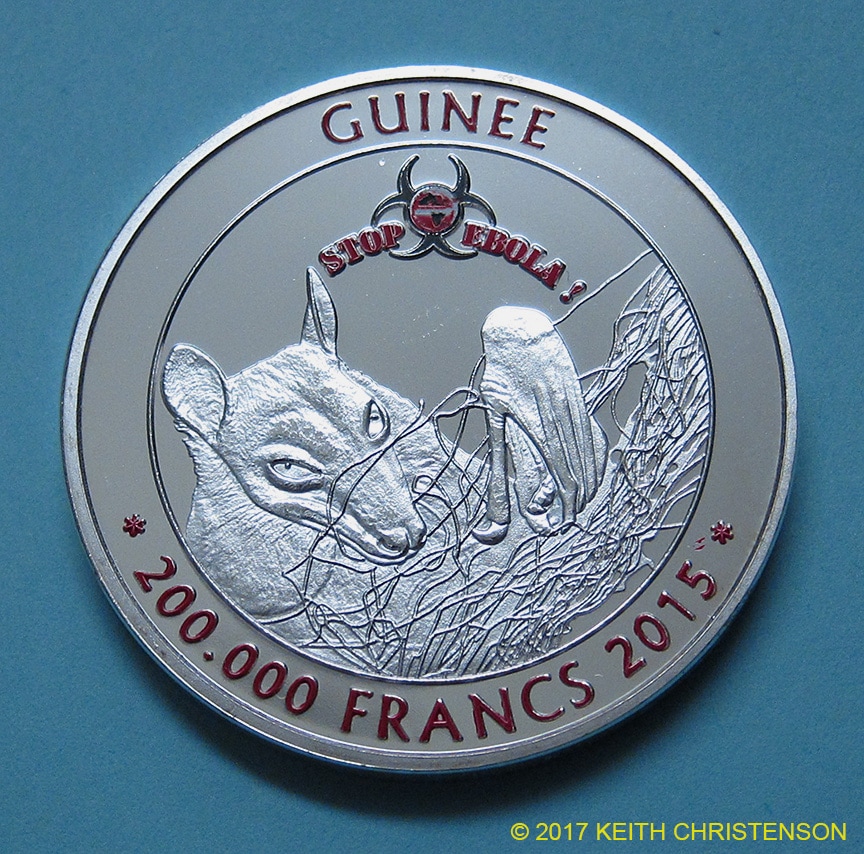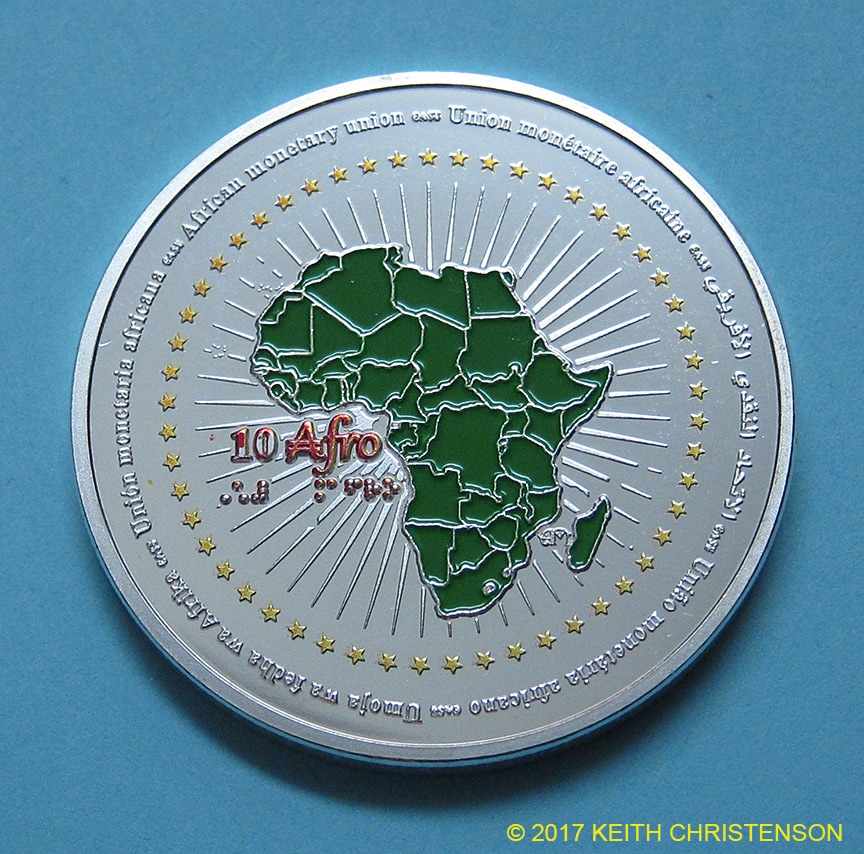Here we have a much larger coin than the Liberia 1 Afro (250 dollars) coin. This hefty coin is from Guinea, and slightly larger than the old US silver dollars back when they were the biggest things out there. It has a diameter of 40mm or just over an inch and a half, or about as big as any coin had ought to be. The denomination is 10 Afros, or 200,000 Francs (about US $22 as of now). And with a mintage listed at a whopping 101, it is one of the most rare bat coins out there. However, as with all of these Afro coins, I really can't figure out who minted them so there is just the seller's word as to how many were made. There is also the question of what it is made of, which can't be answered without something from a mint.
The bat is another flying fox, and seemingly pretty accurate in detail, although I can't be sure of which species they are representing. The overall pose is only "okay" in that I find the bat's left wrist (that big thing to the right of the face) is not entirely clear as to what it is for someone who hasn't seen a lot of bats.
Most interestingly, the bat itself is all tangled up in a mesh net, which surely must be confusing to the average viewer of the coin (as it is to me). I am guessing here that this is a mist net, and the bat is being captured alive by scientists for Ebola studies. But there is nothing at all to back this up, and since I have personally seen home-made hand nets in Africa designed to capture bats for food, well, that would be bad. Scientists studying bats...good. Locals capturing potential Ebola virus source for food...bad. It would be helpful if that second possible interpretation were not real, but it is. And of course I have to say that the flying foxes tend to have beautiful eyes and a dog/fox-like face, not slanty evil eyes and a mad snarl expression. They could have done that bit better.
The final note here is that while the colorizing of the coin adds some visual appeal, it also detracts from the coin as money instead of artwork. So if you are going to colorize a coin and make it art, well do it well, something they did not do here. I like the colors and how the dominant portions of the coin are silver colored and the colorized parts are just highlights, but the paint job kinda stinks. This is an uncirculated proof-like coin and it has paint spatter to the right of the date on the obverse and lots of places where the paint is chipping or wasn't applied right in the first place. Not so apparent with just a quick glance, but give a look at the 10 in 10 Afros and you will see a lot of paint missing there. Too nice a coin not to finish it well, so I wish they would have put just that little extra effort in there.


 RSS Feed
RSS Feed